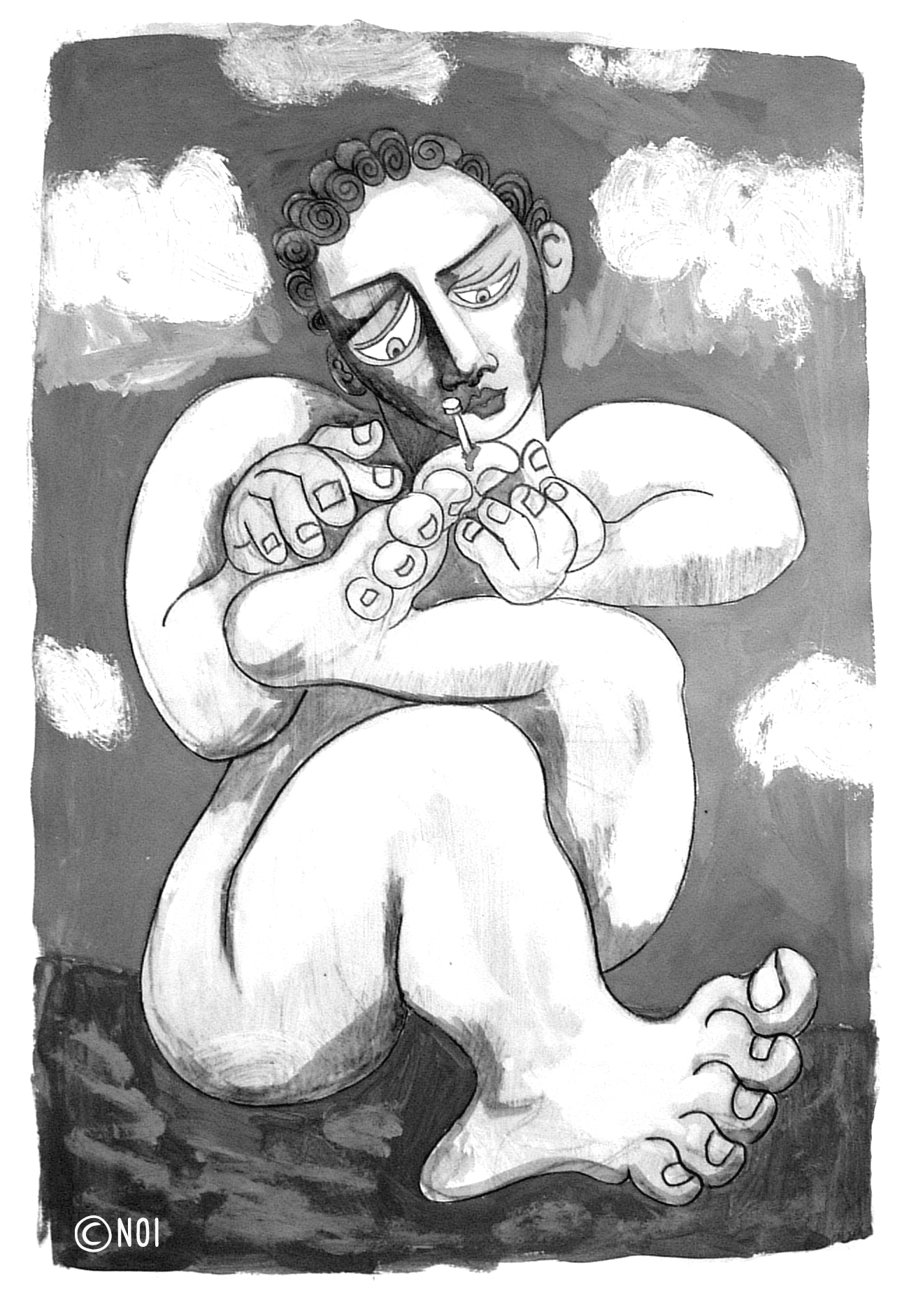Scenario one:
I presume that many of you have heard the famous story, written up in the British Medical Journal, about the man who jumped onto a large nail and was immediately in agony. An animated Ted-ED on the subject has been circulating recently. As the story goes, when they eventually removed the boot, they found that no injury had occurred, the nail having passed between the toes. On this revelation the pain dispersed.
Scenario two:
As a teenager, whilst helping out on a building site, I jumped off a wall with several bricks in my hand, onto a protruding 15cm nail which went straight through my mid foot. At this stage there was no pain. I thought that it was not a good idea to leave the nail in, so I stood on the piece of wood it was nailed through and pulled my foot off the piece of wood. Still no pain. I went into the house, slightly limping because I thought I should I suppose, but no pain, to tell my Dad of the incident. He took some forceps and proceeded to fish around in the wound to see if there was any debris. Still, I felt no pain, just a little sore. The only treatment and care was a tetanus injection.

What’s the difference Doc?
The difference is context, that is to say, the temporary environment of the event. I would imagine that my colleague in self harm was horrified that his reinforced boot had allowed the nail to penetrate. Wow that must be bad! Everyone around might have panicked adding to the importance of the damage. An ambulance was called, sirens rang, a hospital at the other end. The smells and sights of A&E all compounding the importance of the damage and danger. Antigenic responses having a party.
In my case, I was alone. No care, no sympathy, no ambulance and no hospital. A tyrannical father was waiting for me to blame my stupidity for the accident and the inconvenience to him that work had been interrupted and a perfectly good pair of boots ruined!
It’s all about context
It’s all about context at the end of the day. In my case, it was not to my advantage to add pain to an already bad situation. I did not require the additional protection that a pain construction can provide, my cognitions and metacognitions ‘overriding’ any associated molecular patterns (AMPs) produced in my body.
Next time you see someone who is, or who is not, suffering in proportion to what you might believe is normal, have you just been judgemental as to their character? Or have you really cared and dug deeper into their story and their context?
Would you like to know more?
Check out page 58 in Explain Pain Supercharged for the latest on the AMP’s family.
–David Bolton, London 😎
![]()
Related ‘jams
One good thing about music. How music can relieve chronic pain.

I fell down some dusty steps at Yirrkala Art Gallery in Eastern Arnhem Land, splitting my knee open to the bone. No real pain just shock and the prospect of having to leave the trip we had spent one year planning. No Way! Gove Hospital stitched me up (12 sutures, deep and superficial), a few local anaesthetic injections, antibiotics and some panadol and off you go. The context of touring Arnhem Land with the beautiful culture, people, sunsets, song lines, dreaming … I dealt with that injury so much better because of context. It fascinates me to this day. 2 years on my knee is 100% with a beautiful scar and and an even better story.
Dear Debra, Thank you for sharing your personal story and maybe your scar would be quite ugly if you didn’t have such a beautiful and powerful immune system empowered by your thoughts, feelings and emotions 😘
Great story, David, thankyou. I particularly like your reference to someone who is suffering in proportion to our judgement of what we think they ‘should’ be suffering. We all inadvertently make judgement calls without realising it about the level of someone’s pain. I have seen really bad and overt examples in public hospital of those kind of judgements, but we all do it and it is good to be reminded that we aren’t in a position to make that judgement at all.
love the video. It is a story that I have heard before but know have access to a video to show patients with greater detail. I was concerned at the end about, in a sense, disconnecting part of the amygdala or medications as the latest research in helping those with persistent pain. These ideas on finding ways to stop “feeling” pain (or any sensation for that matter) concern me as we seem to be always looking for a mechanical fix for pain. Hummm. Gene therapy? I don’t know. Maybe our hypersensitivity is there for a reason and we can dig more to find out the reason for it rather than “fixing” the reaction. My two cents.
Tracy, PT Seattle, WA
Dear Tracy, thank you so much for your comments…did you ever reflect on he fact that you are a “Gene manipulating therapist” yourself through the knowledge you impart on your patients…🤔
David, that is an excellent point. I love that the “gene manipulating” is brought out by education and movement rather than in a lab however. Thank you for your comment back David. 🙂
Tracy
Thank you Russell for engaging, that in itself shows how you are reflecting and striving, as we all are, to stay impartial which is never easy due to our own personal wounding 👍